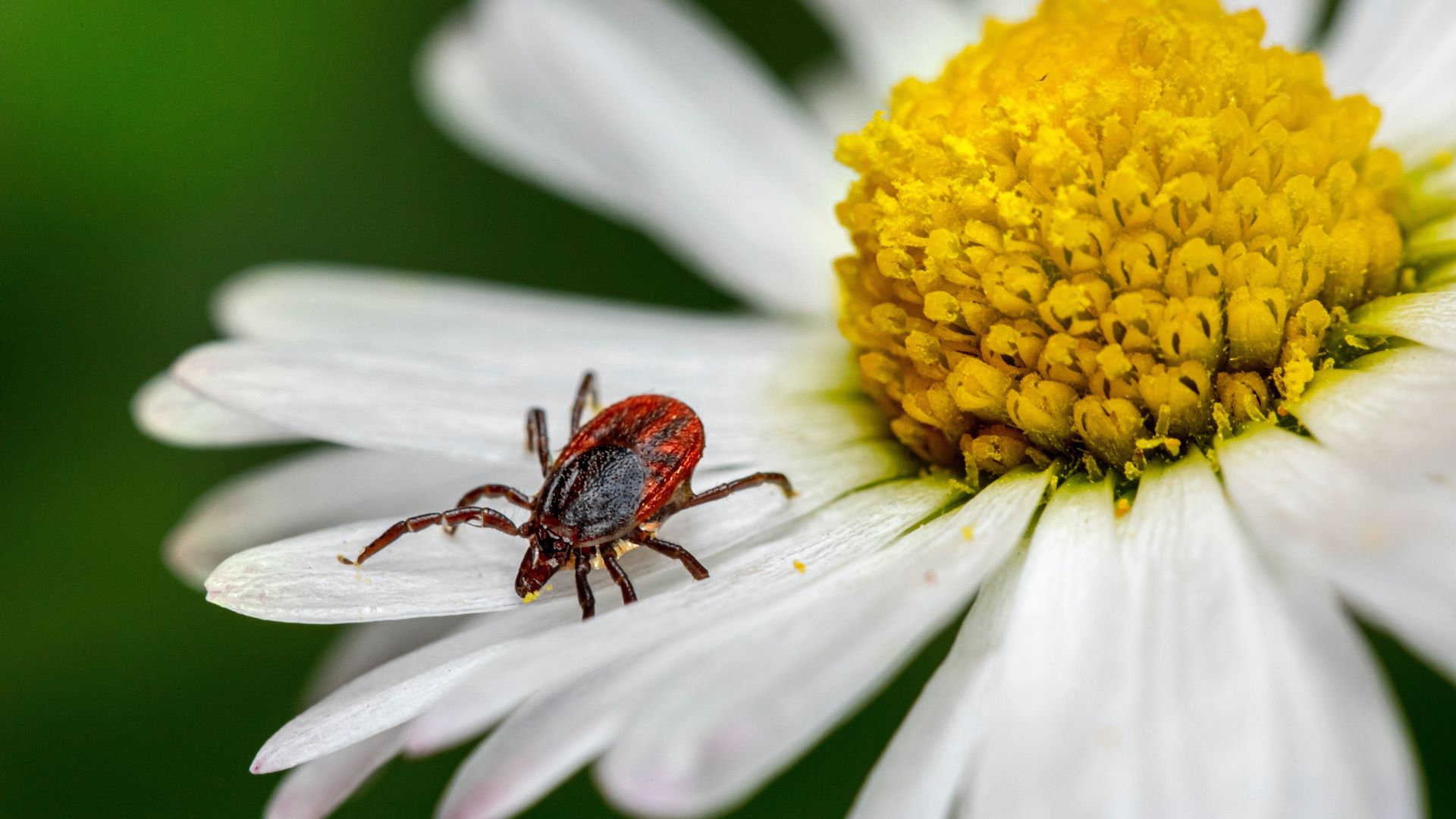🔎 How to spot ticks?

The black-legged tick (Ixodes scapularis) is a known carrier of Lyme disease with an established population in the eastern United States.
Photo: Black-legged tick via Unsplash
Only two types of ticks — black-legged ticks and Western black-legged ticks — are known to transmit the Borrelia bacteria, which causes Lyme disease. However, over 900 species of the arachnid are known to exist around the world.
Ticks go on “questing” until they find a host to latch onto — always on the lookout for body heat, vibrations, and moisture. Once they find refuge on the host’s body, they invade the skin through a feeding tube to suck on tier blood — secreting their saliva onto the wound, which prevents the host’s blood from clotting while keeping them unaware of the wound.
Ticks look like small bugs, ranging in size from a pinhead to a pencil eraser, often having eight legs. They range from reddish-brown to black in color, and continue to swell up as they feed on their host — sometimes turning greenish-blue.
- While hard ticks have a tough, shield-like structure on their backs, soft ticks have a more wrinkled appearance.
- Ticks are most commonly found in shady and moist areas with ground-level vegetation — clinging to grass, shrubs, or small trees while on the lookout for a host.
- Other hotspots include woody or grassy forests and trails, although many people report being bitten in their yards.
A tick bite does not cause pain or itching, but the reaction differs from person to person. Some people may exhibit signs of allergy, including redness and itchiness around the bite or a small bump.
- Ticks initially latch onto exposed areas of the skin, such as the arms, neck, and legs.
- Preferring warm, moist areas of the body, ticks may migrate to the armpits, inside the belly button, back of the knees, in and around the ears, or between the legs.
- The tick season usually lasts from March to October, but some areas may experience a longer season depending on temperature and humidity.
To minimize the risk of tick-borne conditions, check for tick bites whenever you get back home after spending time in an area that might be infested with ticks.
- Take a shower as soon as you get back home from an area that might be tick-infested. Look in the mirror for any red bumps which might indicate a bite.
- Throwing your clothes into the dryer at high heat for 10 minutes is effective in killing ticks. Washing them with hot water beforehand is also recommended by the CDC.
- You can also use repellents and sprays to help protect against ticks.
Examine your pets and other gear after they have been outdoors. Run your fingers around your pet’s fur to check for any small pumps, checking the following areas:
- in and around the ears
- around the eyelids
- under the collar
- around the tail
- under the front legs
- between the back legs
- between the toes
If you do find a tick, crushing it may not work and may instead increase the risk of being exposed to pathogens. Instead, you can flush the tick or kill it with alcohol. Embedded ticks should be removed carefully with tweezers, followed by disinfecting the bite.